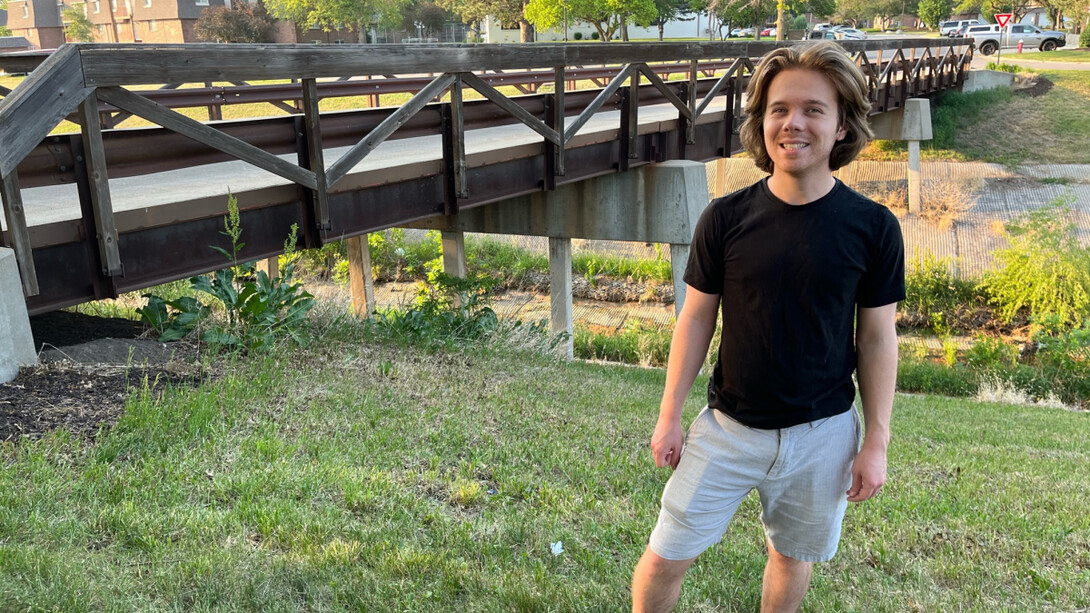
Some wells in Nebraska show higher nitrate levels during drought. Jonathan Cronk, a master’s student in hydrology, is developing models of these wells to share with well owners and find solutions.
Nitrate converts to nitrite in the body and reduces the ability of blood to carry oxygen. A person with high levels of nitrate may appear blue or gray, have an accelerated heartbeat and feel weak, tired and dizzy. High levels of nitrate have been linked to thyroid disease and cancer. For babies, high levels of nitrate can cause birth defects and blue baby syndrome, leading to death.
In Nebraska, about 85% of the population uses groundwater from wells as drinking water.
Cronk and Francisco Muñoz-Arriola, professor of hydroinformatics and hydroclimatology, are using the Nebraska Groundwater Quality Clearinghouse to identify wells with high nitrate levels. They plan to look at the depth of the wells, the depth to the water in the wells and nearby soil properties.
If they can develop models of the wells most likely to be vulnerable to high nitrate levels, they can then share those with well owners whose wells “match” the models and catch problem wells at the beginning of a drought or other extreme weather.
Cronk said reducing withdrawals from the wells would likely help and he hoped to determine a reduction in pumping, possibly a ratio, that would protect the wells. This would be a significant contribution to the field of groundwater science, which dates back only to the 1850s, he said.
Scientists’ understanding of how contaminants move in groundwater and how to remedy them is limited, Cronk said. They know that contaminants arrive on the surface of the well water and spread throughout the water slowly. Many factors can affect the way contaminants spread and how fast, but generally, the concentration of contaminants is higher near the surface of the water and lower deeper in the water.
During a drought, the water level falls when more is withdrawn than what comes back in. People withdrawing water then can expect to find more contaminants in it even though the well is not more contaminated than before. This has confused people in the past, but Cronk offered an explanation.
“When we take more water out than what is coming back in, the water level falls and the high-concentration water remains at the surface of the water table,” he said. “So, there are not necessarily more contaminants in the well itself, but there is less low-concentration water to draw from. We see a higher concentration of contaminants in withdrawals since we are left taking the water closer to the surface of the water table.”
Scientists have written few papers on this, all after the year 2000 and most of those after 2010, he said.
“Our understanding of this as a whole is limited, and this is essentially the crux of my research,” he said.
While logic might suggest that drought would affect shallow wells more, this may not be the case.
“It’s not necessarily shallow wells that are most vulnerable,” Cronk said. “It’s wells where there is a small difference between the depth to the water and the depth of the well because, actually, if it’s 100 meters down to the water, which is pretty far, and the well is like 120 meters, that’s also pretty far, but the difference between them is pretty small and so that might be a well that is vulnerable.”
The danger he sees is increased drought brought on by climate change, he said.
“If there are significant hydrologic changes to a region due to a change in climate, being prepared for that is important,” he said. “Exhausting groundwater resources would likely result in a change in social regime because then agriculture has to change dramatically to continue producing the same levels or the people living here have to change how they’re using their water.”
Cronk’s research is supported by the National Science Foundation Research Traineeship at Nebraska, a program for graduate students studying the resilience of agricultural lands. He plans to apply to the Environmental Protection Agency or a consulting agency after graduating in December 2023 and said he was grateful for the chance to work with other NRT scholars on complex questions while earning his master’s degree.
“It’s just very nice to be able to do something that feels significant and that feels aligned with what I want to see in the world,” he said.







